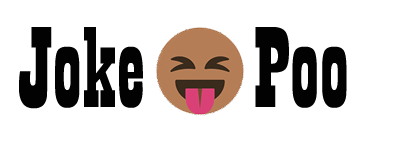“You know”, says one of them, “people are indeed very strange species.”
“What do you mean?”, says the other.
“Well, let me give you an example. If you tell a person that there are 9,763,627,821,513 stars in the sky, and they'll believe you. But if they see a Wet Paint sign on the wall, they will most definitely touch it to make sure."
Joke Poo: The Tech Support Call
Two IT support technicians are discussing their workload.
“You know,” says one, sighing, “users are a truly baffling species.”
“What makes you say that?” asks the other.
“Well, I’ll give you an example. If you tell them there are 9,763,627,821,513 unread emails in their inbox, they’ll believe you. But if you tell them to restart their computer to fix the problem, they’ll most definitely argue with you about it, before trying everything else first and then restarting.”
Alright, let’s break down this philosophical knee-slapper.
Joke Dissection:
- Core Concept: The joke hinges on the contrast between humans’ unquestioning acceptance of large, unverifiable abstract numbers (stars) versus their irresistible urge to personally verify immediate, tangible warnings (wet paint).
- Humor Source: The humor lies in the absurdity of this irrational behavior. We trust complex calculations but distrust a simple painted sign. It points to a fundamental human tendency to question authority, even when it’s counterproductive.
- Target: The joke targets human nature, specifically our inherent skepticism, curiosity, and, perhaps, a touch of rebellious spirit.
- Structure: It uses a classic setup-punchline structure. The philosophical framing provides a context for the observation, making the punchline more impactful.
Key Elements:
- Philosophy: The framing device. It lends an air of intellectualism.
- Large Numbers: Represents abstract, unverifiable facts.
- Wet Paint Sign: Represents concrete, immediately verifiable warnings.
- Contradictory Behavior: The crux of the humor.
Comedic Enrichment:
Now, let’s use these elements to create some new humor…
Option 1: Witty Observation
“It’s fascinating. We’ll accept the Boltzmann constant without batting an eye, but challenge the structural integrity of a door clearly labeled ‘PUSH’.”
Why this works:
- It maintains the comparison of abstract vs. concrete.
- It substitutes a scientific constant for the large number, adding a layer of intellectual irony.
- “Push” is a very, very common thing that should be known, but many of us (including me) have pulled.
Option 2: “Did You Know?” with a Twist
“Did you know that the psychological phenomenon of touching ‘Wet Paint’ signs is so prevalent, it’s spawned countless variations of practical jokes involving transparent barriers and strategically placed buckets of water? Fun fact: the leading cause of ‘accidental’ splashes involving philosophy professors is precisely this sort of meticulously planned academic mischief.”
Why this works:
- Builds on the original joke’s premise.
- Adds a layer of absurdity by suggesting the ‘wet paint’ phenomenon is widely studied.
- Injects a bit of lighthearted cynicism about the behavior of philosophy professors themselves, completing the circle.
- References “transparent barriers,” a dig at glass doors with the “push/pull” confusion.
Option 3: A New Joke
A physicist, a chemist, and a philosopher are on a train. They pass a field of black sheep.
The physicist says, “Aha! I see that sheep in this region are black!”
The chemist says, “No, no. We can only say that at least one sheep in this region is black.”
The philosopher says, “You’re both wrong. We can only say that at least one sheep in this region appears to be black… on this side.”
Why this works:
- It mirrors the philosophical framing.
- It uses scientific and philosophical perspectives to dissect an observation, gradually increasing the level of skepticism.
- The humor stems from the philosopher’s over-the-top, almost comical, adherence to the limitations of knowledge, akin to the excessive caution exhibited with the wet paint sign.
In Summary: The best jokes offer something relatable. By understanding the core elements and identifying the source of the humor, we can create new comedic content that expands on the original idea while still resonating with the audience. The challenge is to amplify the absurdity while remaining grounded in a kernel of truth.


